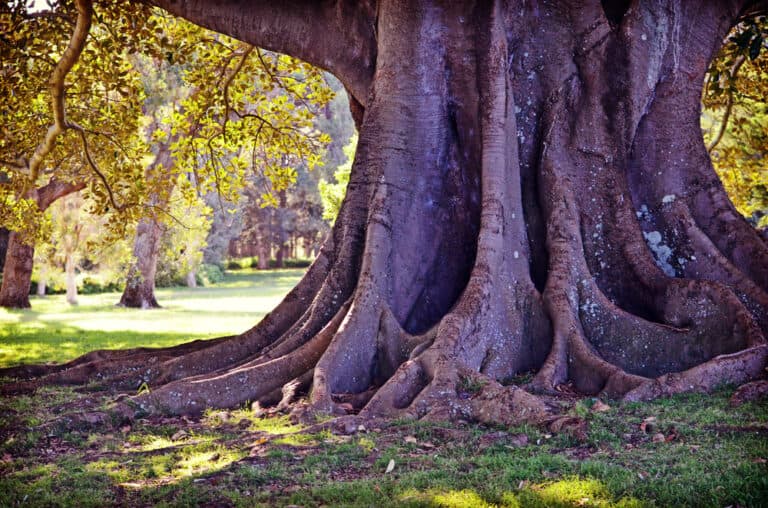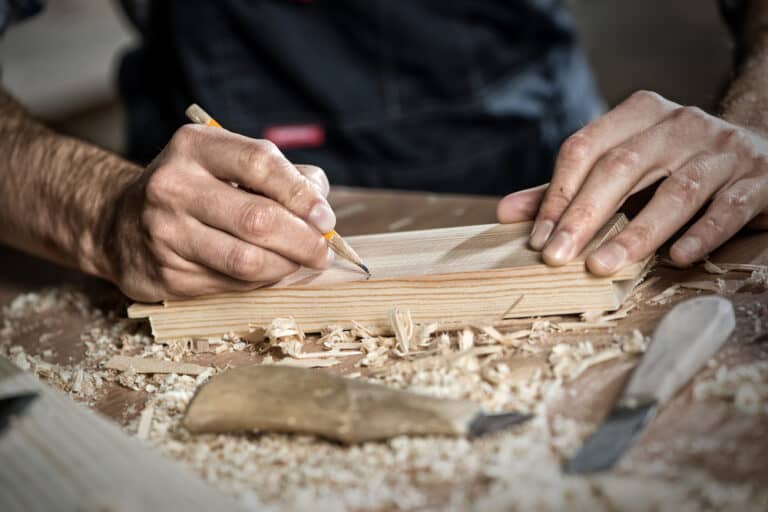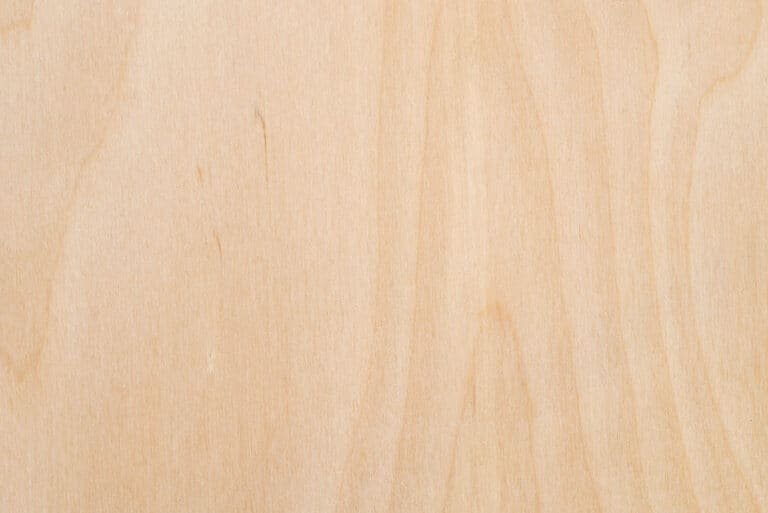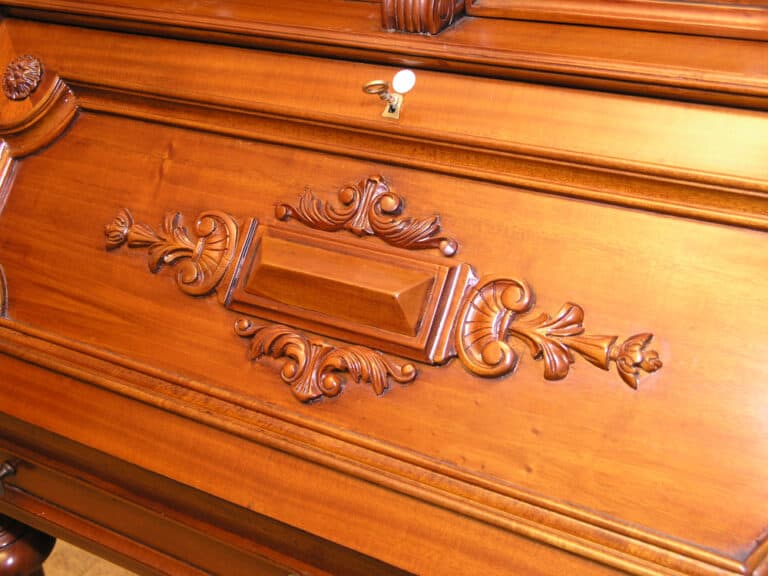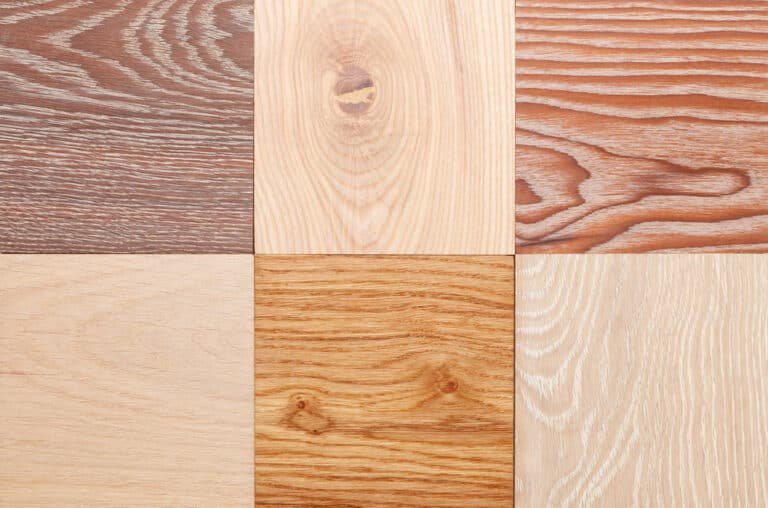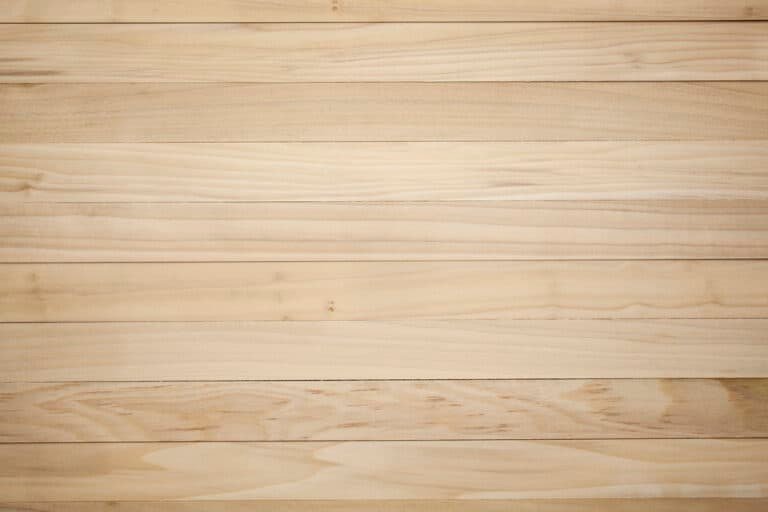Mulberry wood is good for carving. It is soft for hardwood, making it easy to shape but also strong and durable. Mulberry is not as easy to carve as softwoods but is one of the easier hardwoods. Additionally, Mulberry is rot-resistant, making it ideal for outdoor sculptures.
There are endless possibilities to carve beautiful things with Mulberry wood. Below we will get into the advantages & disadvantages of carving with Mulberry. Plus some tips to get you started.

Related: The wood carving tools that you need to get started.
Why Choose Mulberry Wood for Carving?
Mulberry wood has several qualities that make it a popular choice for the creation of sculptures and carvings:
No Odor
When carving a work of art, using only quality wood that won’t produce a foul smell is essential. Mulberry is the best choice for you.
Easy and simple to shape
Mulberry is a hardwood that makes beautiful desktops, mantles, and cabinets. It has more natural ridges and grooves in its grain than the more commonly found softwoods, making carving with it very easy.
And because of these natural ridges and grooves, there is extra support for your carving tool.
Can carve precise, detailed designs
The straight, fine-grained wood of the mulberry tree is ideal for carving Netsuke. The wood has a medium weight so that it can be engraved with care and precision for relief carvings or pyrography.
Durable
It is durable, clean, and golden-brown, with a creamy yellow to reddish brown coloring.
Less Blade Wear
Mulberry wood is prized because of its hardness and low elasticity, which reduce blade wear in woodturning. This allows the blade to slide along the workpiece smoothly, minimizing friction and heat build-up.
Good choice for Carving bowls
Mulberry also contains less sapwood than other woods, an added benefit if you are turning bowls or bowls with handles.
Non- Toxic/ not allergic
The main health risks of cutting wood are dust mites and bacteria that can cause wood-related diseases. Besides these general risks, no further health reactions have been associated with Mulberry.
Great for outdoor molding (Chainsaw Carving)
The beauty of Mulberry is its ability to resist rot, with a natural ability to hold tight color even in extreme weather conditions. The product is durable, easy to handle, and resistant to shrinkage.
Mulberry Uniqueness
This deep amber-ish brown color is created by sunlight, turning the heartwood (the non-translucent wood part) of the Mulberry into this rustic, brown color.
It makes it feel more like natural wood for carving and adds a beautiful contrast to any decorative project.
Related: Is Maple Good for Carving?
Challenges of carving mulberry
Mulberry wood is suitable for carving, but it is not as popular as some other types of wood due to the following cons:
Mulberry is Expensive
The classically styled Mulberry is gorgeous, but it comes with a price. A variety of Mulberry found in a small mountainous area of Japan is the most expensive wood on the planet.
Your garden variety Mulberry isn’t anything like that but is still among the more expensive woods to carve with.
Knowledge of special finishing
When you choose Mulberry wood for carving projects, you can be confident that it’s the best choice for your project. But achieving a quality look with your Mulberry requires an extra step: you’ll have to finish it yourself or have it completed by someone else.
How to start carving with mulberry wood
If you’re thinking about carving mulberry wood, the first step is to be aware of some common mistakes and their best practices. Once you have your bearings, you need a little prep work before you start.
This brief guide has everything you need to get started on your path to becoming an expert Mulberry wood carver.
Prepare Your Mulberry Wood
Making carving projects easier is as simple as taking a few simple steps. First, and most importantly, soaking your mulberry wood in a 50/50 rubbing alcohol mixture will make it easier to carve without buying new tools or supplies.
Once the wood has been soaked for a couple of days, it’s time to spray with paint or varnish to protect your decorated wood project from moisture damage before sharpening your tools and getting started!
Related: Carving Pecan Wood
Tips For Carving Mulberry Wood
1. Don’t use too much pressure when carving Mulberry wood
Applying too much pressure when cutting Mulberry wood can lead to your wood splitting. Applying moderate pressure will result in an edge that is good for dabbling with detailed work.
2. Whenever possible, carve straight down the grain.
If you are carving across the grain, drawing a line perpendicular to the grain direction is recommended before making your first cut. It helps you avoid tearing the wood as you carve.
3. Sight the Edge
Whether carving with a tool or carving with your hands, it is essential always to have the sight edge. Never lose sight of it – even when cutting away from it.
Even if your knife has a beautiful advantage, it will be useless if you give up proper sharpening routines. Keep your edge sharp, and you get a big slice out of life!
4. Use power tools.
Don’t be fooled by its size; the Mulberry’s hardiness doesn’t stop at its appearance.
This wood is tough and can take a great deal of abuse. Use it in your next project for an exciting look since the grain tends to be tight and easily carved with power tools.
Related: Tips for carving with Apple Wood
Mulberry Carving Project Ideas
- Spoon Carving: Mulberry’s fine grain makes it ideal for carving kitchen utensils like spoons, forks, and spatulas. These items can be both decorative and functional.
- Custom Jewelry: Create pendants, beads, or earrings. The wood’s durability and unique coloration can make for beautiful pieces.
- Decorative Bowls: Mulberry wood has a pleasing appearance that can enhance the aesthetic of hand-carved bowls. These can range from small trinket bowls to larger fruit bowls.
- Figurines and Statues: The wood’s workability lends itself well to detailed figurines or statues, which can be either stylized or realistic.
- Relief Carvings: Wall hangings or panels with relief carvings can be a great way to showcase the wood’s qualities, as the depth and shadows in relief carving can highlight the wood’s color variations.
- Walking Sticks and Canes: The strength of mulberry wood makes it a good choice for carving walking sticks and canes, which can be adorned with intricate designs or kept sleek and simple.
- Musical Instruments: Small instruments like flutes, whistles, or even parts of stringed instruments can be crafted from mulberry due to its acoustic properties.
- Puzzle Boxes: Craft a small, intricate box with a hidden mechanism that requires solving a puzzle to open. Mulberry’s fine grain is perfect for the detailed work required.
- Picture Frames: Carve custom picture frames with unique patterns or motifs that can complement the wood’s texture and color.
- Bookmarks: Thin, delicate bookmarks with ornate carvings can be a simple project that highlights the wood’s fine details.
- Ornaments: Whether for holidays or general décor, mulberry wood can be used to create beautiful, long-lasting ornaments.
- Custom Signs: Carve signs for homes or businesses with the wood’s distinctive look providing a rustic charm.
- Chess Pieces: A set of chess pieces can be a challenging project that allows for a lot of creativity in design.
- Cabinet Door Inlays: Use mulberry wood for intricate inlays on cabinet doors to add a touch of elegance to furniture.
- Knife Handles: The strength of mulberry makes it suitable for knife and tool handles, which can be carved to fit comfortably in the hand.
FAQs
Is Mulberry suitable for beginner carvers?
Yes! Mulberry is a very light and soft wood perfect for making bowls, spoons, and other small objects. It has a bland color, but it won’t dull your tools, making it great for beginners.
How long should I dry Mulberry wood for carving?
You should dry Mulberry for 5 – 8 weeks before you begin carving it.
Final Thoughts
Mulberry is a great wood to carve with. It is a hard wood and doesn’t crack, split or splinter easily. You should go with soft wood such as pine or cedar if you’ve never carved before. But Mulberry is a great place to start when you are ready to graduate into hardwood carving.
Sources:
https://www.woodweb.com/knowledge_base/Drying_and_Processing_Mulberry.html
https://www.wood-database.com/wood-articles/wood-allergies-and-toxicity/
